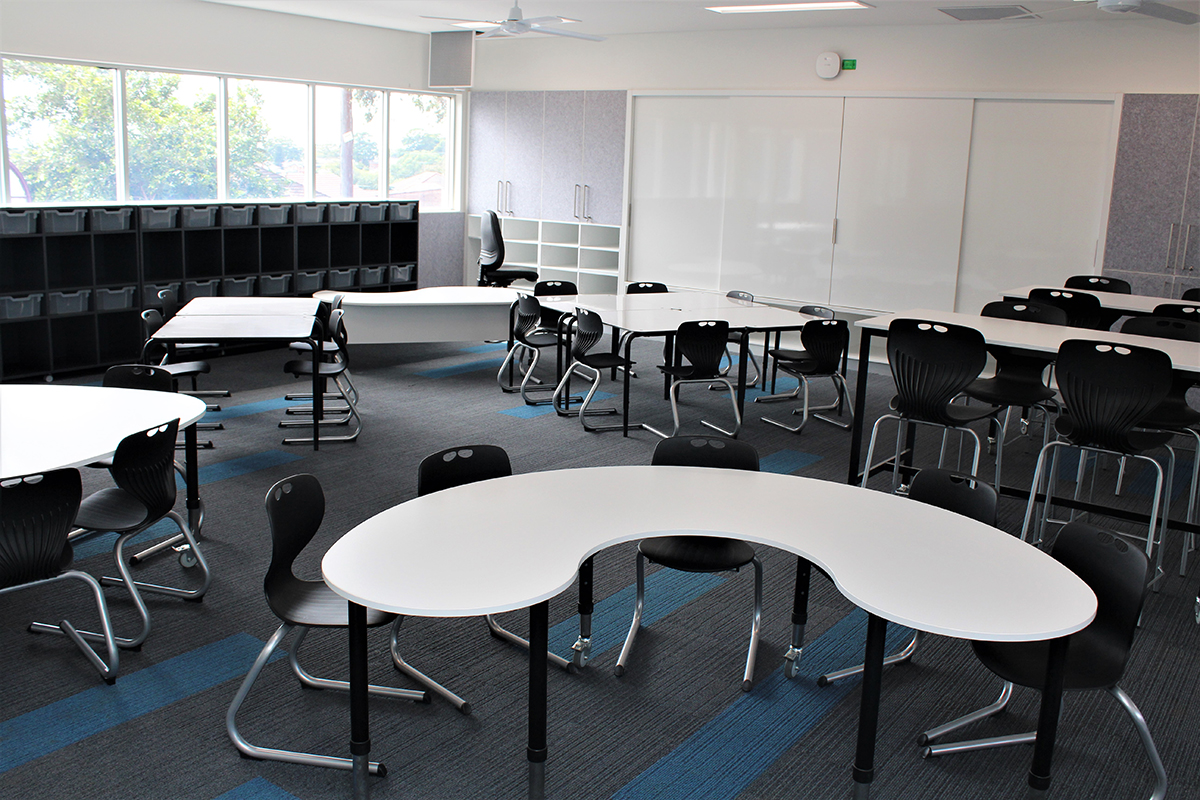Fostering Creativity: The Role of Flexible Furniture in Modern Classrooms

In the dynamic landscape of modern education, the role of the physical environment in enhancing learning experiences cannot be overstated. Among the various elements that constitute an effective learning space, flexible furniture stands out as a critical component. It’s more than just a trend; it’s a reflection of the evolving educational paradigms that emphasise creativity, collaboration, and adaptability.
The Link Between Furniture and Creativity
The connection between the physical learning environment and student creativity is increasingly gaining attention. Flexible furniture in classrooms plays a pivotal role in this context. It goes beyond traditional, rigid classroom setups and introduces an environment where students can physically rearrange their space to suit their learning needs. This freedom to adjust and modify one’s surroundings is directly linked to fostering creativity. It encourages students to think outside the box, collaborate more effectively, and engage in hands-on learning experiences.

Types of Flexible Furniture
Flexible furniture in classrooms encompasses a variety of items designed to support diverse learning styles and activities. Modular desks that can be easily reconfigured for individual work or group projects, movable chairs with wheels for quick and easy rearrangement, and adjustable height tables catering to different age groups and activities are common examples. These pieces are often lightweight and designed for easy mobility, enabling quick transitions between different teaching methods and learning activities.
Benefits for Teachers and Students
The implementation of flexible furniture brings manifold benefits. For teachers, it offers the versatility to adapt the classroom layout to suit various teaching methods, from lectures to group discussions or project-based learning. Students, on the other hand, benefit from a learning environment that accommodates different learning styles and promotes engagement. The ability to move and reconfigure furniture empowers students, giving them some control over their learning space, which can lead to increased motivation and a sense of ownership over their learning process.

Challenges and Considerations
While the benefits are significant, there are challenges in adopting flexible furniture. Budget constraints, space limitations, and the durability of furniture are common considerations. The key to overcoming these challenges lies in careful planning and prioritisation. Schools must consider their specific needs and constraints, possibly starting with smaller changes and gradually moving towards a more comprehensive implementation.
Future Trends
Looking ahead, the trend in flexible furniture is moving towards even more innovative and technology-integrated solutions. Furniture that incorporates technology, like desks with built-in charging stations or interactive whiteboards, is becoming more common. Additionally, there’s a growing emphasis on eco-friendly and sustainable materials in furniture design, aligning with broader environmental concerns.
Embracing flexible furniture in modern classrooms is not just about keeping up with educational trends; it’s about acknowledging and responding to the changing needs of students and educators. By fostering a more adaptable, creative, and engaging learning environment, flexible furniture can significantly contribute to the educational journey of students, preparing them for a world where adaptability and creativity are key. In the quest for educational excellence, flexible classroom furniture is not just furniture; it’s a tool for inspiration and innovation.










